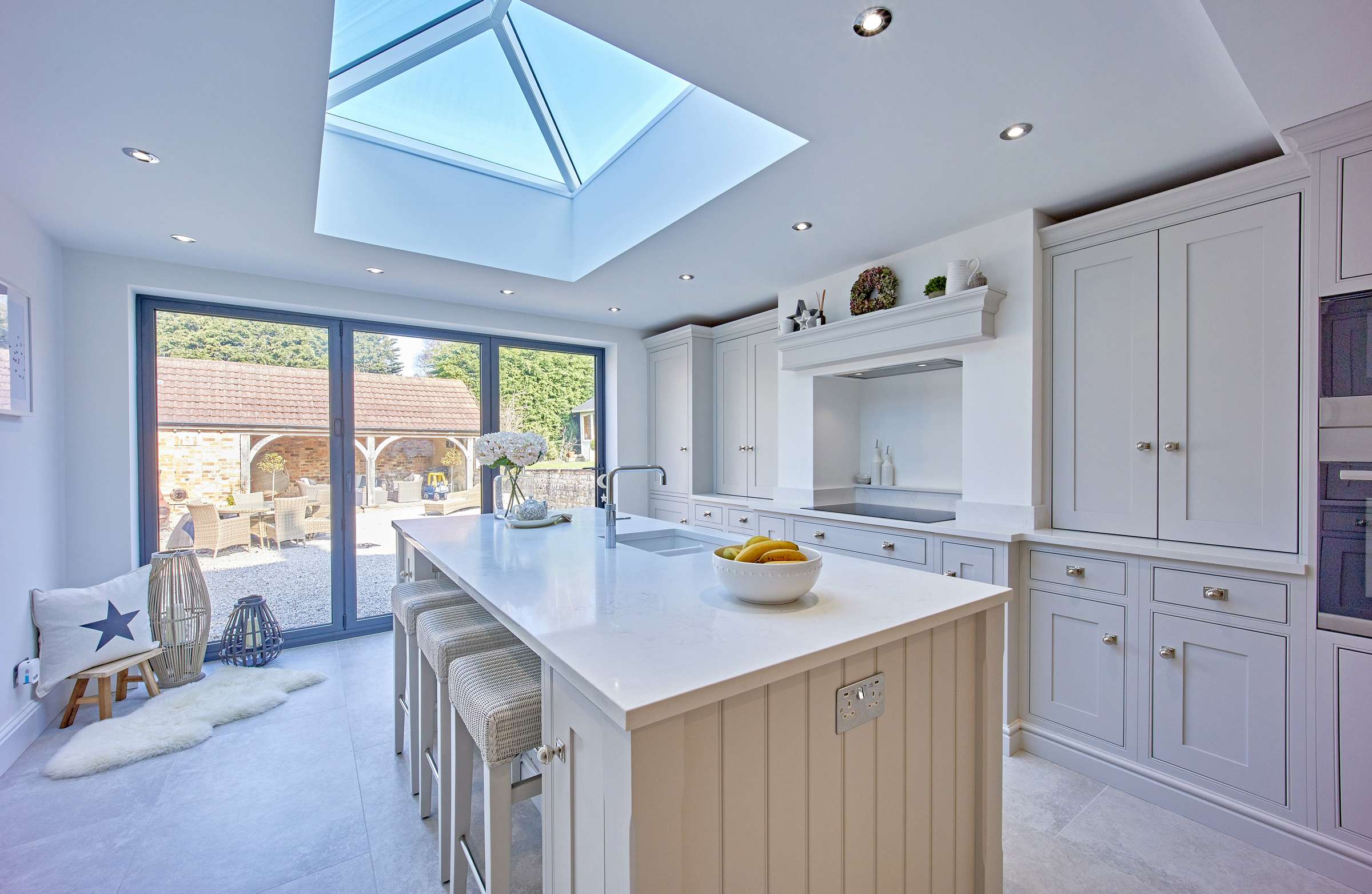Extending your kitchen can pay dividends in terms of value to your property but also your home life. The kitchen is the hub of the home after all, so knocking down walls and extending out to the side or rear garden will extend the space and give you much more potential in terms of design and layout.
Before embarking on what is quite a major project there are a few things to consider, including:
Budget – It’s not worth committing to anything until you have a good idea of what it will cost and how much you can afford. There are ways of saving money if the budget is tight, by remodelling an existing layout, for example, or removing internal walls to link two rooms together. Or perhaps consider converting and linking an integral garage rather than physically adding more space on to the property as this will cut down on labour costs and the need for planning permission. This is also a good idea option if you are short on time.
Time – Consider how you will manage on a practical level without a kitchen and make sure you discuss with the builders how long they are expecting the project to take them before committing. Think about how you can manage until the new space is accessible to cut down on stress.
Where will the kitchen extension go? – Most are rear facing to enable space to be taken from the garden, or added to the side of the property. It is important to consider how the kitchen will be accessed internally. If possible, access should be from the main hallway rather through another room.
Layout – how will you use the new kitchen and what do you want from the space? Does it need to be a multi-functional area, used for dining and socialising as well as preparing meals? If it is rear facing consider also how the layout can be planned to make the most of views and access to the garden, perhaps with full length glass doors and the appliances and sink brought into the centre in an island.
Fixtured & fittings – Here is where the exciting bit begins. Have a think about the colours and materials you would like to use, browse magazines and sites such as Pinterest for inspiration and speak to your designer to see how best to incorporate the things you like into your new kitchen.
A general rule of thumb is to use brighter colours in kitchen that lack natural light, with bolder, darker shades working well if the space is generously sized.
Don’t get so hung up on aesthetics that you forget the practical elements of the kitchen though; storage is important and when choosing materials consider how hard wearing and easy to look after they are. Work surfaces, for instance, will be subject to a large amount of wear and tear over the life of your kitchen but are always on show, making it important to choose a material that is durable and beautiful, such as Ceralsio or CRL Quartz which are both also extremely easy to care for.
Request Brochure Request a Sample